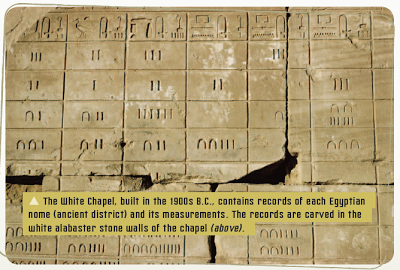What Is Computing ?
When people hear the word computing, they usually think about using
computers. But computing has another meaning. Computing involves using numbers
to count, gather information, and solve problems. Computing involves mathematics—the science of
numbers. Math has many branches and many practical applications. It is used in
almost every area of science, medicine, business, construction, and manufacturing.
Computing probably began shortly after the first humans appeared on Earth.
The ancient Egyptians used computing technology for many projects. They
used addition and subtraction to keep track of taxes and business deals. They
used surveying to measure farmers’ fields. They measured time with sundials and
other types of clocks. They used engineering techniques such as measuring right angles (angles that are perpendicular,
measuring 90 degrees) to build giant pyramids
and temples.
Picture Numbers
Mention hieroglyphics, and most people think of the Egyptian
system of picture writing. But hieroglyphics was also picture numbering. In the
Egyptian system, a single line stood for 1, two lines for 2, three lines for 3,
and so on up to 9. An archlike symbol stood for 10. A spiral represented 100.
The number 1,000 was represented by a lotus plant. A picture of an
index finger meant 10,000. The picture for 100,000 was a tadpole or a frog. A
man sitting with arms upraised stood for 1,000,000.
To write the number 1,109, an Egyptian scribe would draw a lotus
plant (1,000), a spiral (100), and nine lines (9). One finger, one lotus, and
two spirals meant 11,200. A man and a tadpole together stood for 1,100,000.
Ancient Text Books
In the 1800s, archaeologists discovered two textbooks used in
schools in ancient Egypt. Both books were long scrolls of papyrus, a kind of
paper made from the papyrus plant. The books had been used to teach scribes.
These professionals were trained to read, write, and perform equations in
ancient times.
The Rhind Mathematical Papyrus is our most important source of information
about Egyptian math. It was named for Alexander Henry Rhind, a Scottish
archaeologist. He obtained the scroll near the Egyptian city of Thebes in 1858.
The scroll is about 18 feet (5.5 meters) long when it’s unrolled.
An Egyptian scribe, Ahmes the Moonborn, wrote the papyrus around
1650 b.c. He called it “insight into all that exists, knowledge
of all secrets.” The papyrus explained how to add, subtract, and do other
computations with whole numbers and fractions. Most ancient Egyptians were not
educated.
They wouldn’t
have understood the scroll, which explains why its contents were considered
“secrets.” But the equations would be a snap for most modern sixth-grade
students.
Ahmes
also included more advanced math in his textbook, including algebra. This
branch of math uses symbols to stand for numbers. One simple algebra equation
is 6 + x = 7. The answer is x = 1. Another algebra equation is 45 – x = 40. The
answer: x = 5.
The
Egyptians used algebra to solve practical problems. For instance, suppose one
thousand stonecutters were building a pyramid. Each stonecutter ate three
loaves of bread a day. How much bread would be needed to feed the stonecutters
for ten days? The equation: x = 1,000 3 10.
The Rhind
Papyrus also included brainteasers and word problems. See if you can solve the
following one, just as Egyptian students had to:
Seven houses contain seven cats. Each cat
kills seven mice. Each mouse had eaten seven ears of grain. Each ear of grain
would have produced seven measures of wheat. What
is the total of all these items together? See the answer below[1].
Source: Micheal Woods and Mary B. Woods, Ancient Computing Technology, 2011





0 Comments